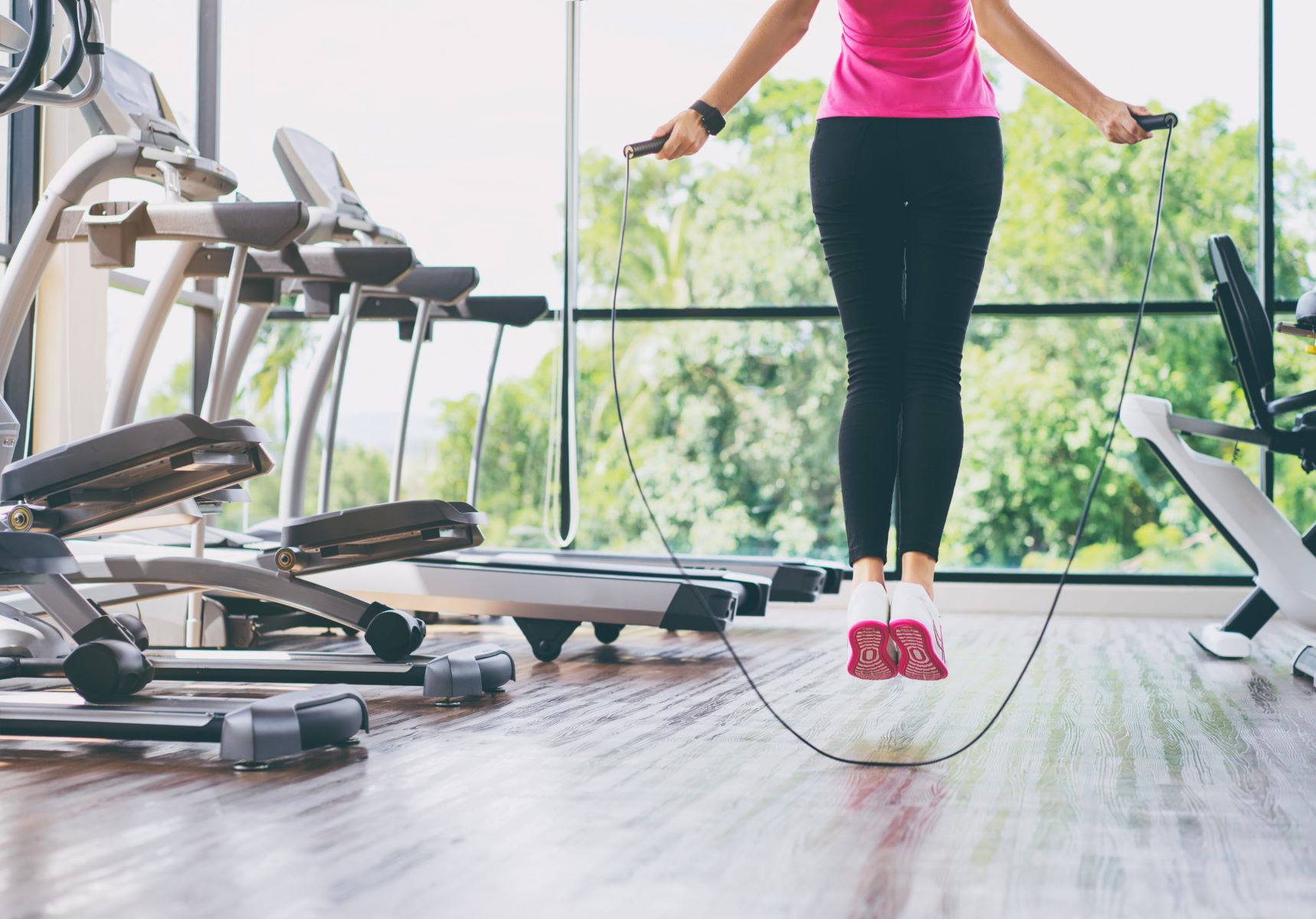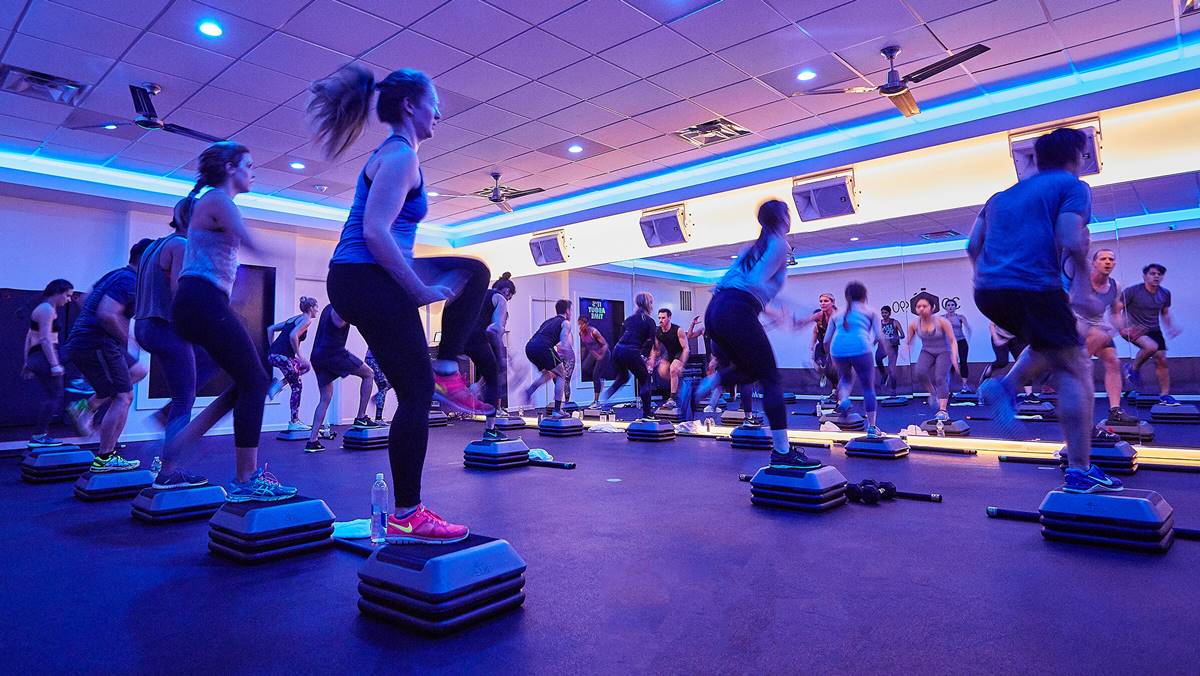

Featured
How To Not Get Tired While Jogging
Modified: August 21, 2023
Learn how to avoid fatigue while jogging with our featured tips and techniques. Stay energized and maximize your runs for optimal results.
Introduction
Running is a fantastic way to stay active, improve cardiovascular health, and boost overall fitness. Whether you are a beginner or an experienced runner, it’s common to experience fatigue and tiredness during your jogging sessions. However, with the right strategies in place, you can minimize fatigue and maintain your energy levels throughout your run.
Managing energy while jogging is crucial for achieving your fitness goals and ensuring an enjoyable running experience. It helps you push past your limits, overcome mental and physical barriers, and maximize your performance. In this article, we will explore various techniques and tips to help you avoid getting tired while jogging.
It’s essential to approach your jogging routine with a holistic mindset that focuses on both physical and mental aspects. By incorporating proper warm-up exercises, maintaining a steady pace, practicing correct breathing techniques, staying hydrated and nourished, allowing for adequate rest and recovery, utilizing music and mental distractions, and investing in cross-training and strength training, you can significantly improve your endurance and prevent exhaustion during your runs.
So, if you’re ready to take your jogging game to the next level and never feel tired again, let’s dive into these energy-management strategies. By implementing these techniques, you’ll not only enhance your running performance but also make it an enjoyable and sustainable part of your fitness routine.
Importance of Energy Management
Energy management plays a vital role in your ability to sustain a steady pace and complete your jogging sessions without feeling excessively tired. It involves understanding how to balance your energy expenditure and replenishment to optimize performance and minimize fatigue.
One of the key benefits of energy management is that it helps you maintain a consistent pace during your jog. When you start running, your body relies on stored energy sources like carbohydrates. As you continue running, your body transitions to using fats as an energy source. By managing your energy levels effectively, you can prevent a sudden drop in energy and avoid the feeling of fatigue that comes with it.
Another reason energy management is essential is that it allows you to push past mental and physical barriers. When you’re tired, negative thoughts can flood your mind, making it more challenging to stay motivated and continue running. By having a well-managed energy system, you can boost your mental resilience and overcome those barriers, leading to a more enjoyable and successful running experience.
Additionally, proper energy management helps prevent injuries. Fatigue increases the risk of poor form and reduces your body’s ability to withstand the impact of running. By maintaining optimal energy levels, you can ensure that your muscles remain strong and your movements are efficient, reducing the chances of injury.
Furthermore, managing your energy levels can improve your overall running performance. When you optimize your energy expenditure, you can maintain a consistent pace and finish your runs strong. This is especially important if you’re training for a race or looking to improve your personal records.
To sum it up, energy management is crucial for sustaining your running performance and preventing exhaustion. It helps you maintain a steady pace, overcome mental and physical barriers, prevent injuries, and enhance your overall running experience. By implementing effective energy management strategies, you can ensure that you get the most out of your jogging sessions and achieve your fitness goals.
Proper Warm-up
A proper warm-up is essential for preparing your body for the demands of jogging and preventing fatigue. It helps increase blood flow to your muscles, loosens up your joints, and primes your cardiovascular system for exercise.
Start your warm-up routine with dynamic stretches that target major muscle groups. These stretches help improve your range of motion, flexibility, and muscle activation. Examples of dynamic stretches include leg swings, arm circles, walking lunges, and high knees. Perform each stretch for about 20 to 30 seconds, gradually increasing the intensity as your muscles loosen up.
Incorporate some light aerobic exercises into your warm-up, such as a brisk walk or a gentle jog. This helps elevate your heart rate and gets your body into an exercise mode. Aim to perform the aerobic exercises for at least 5 to 10 minutes.
In addition to stretches and aerobic exercises, include some functional movements that mimic the actions and intensity of jogging. This can include exercises like butt kicks, skipping, or slow jogging. These movements activate the specific muscles involved in running and mentally prepare you for the activity ahead.
It’s important to listen to your body during the warm-up and adjust the intensity and duration of each exercise based on your fitness level and comfort. Remember, the goal is to gradually increase your heart rate, warm up your muscles, and mentally prepare for the upcoming jog.
By incorporating a proper warm-up into your jogging routine, you can better prepare your body for the physical demands of running. This reduces the risk of fatigue by increasing blood flow, improving muscle flexibility and activation, and mentally preparing you for the activity ahead. So, don’t skip the warm-up – it’s a crucial step in ensuring a successful and energized jogging session.
Slow and Steady Pace
When it comes to jogging, maintaining a slow and steady pace is key to conserving energy and preventing early fatigue. Many runners make the mistake of starting too fast, leading to a rapid depletion of energy and an increased likelihood of burnout.
By starting your jog at a comfortable and sustainable pace, you allow your body to gradually adapt to the physical demands of running. This helps in conserving energy and avoiding unnecessary strain on your muscles and cardiovascular system.
Running at a slower pace also enables you to focus on your form and breathing. Proper running form, with an upright posture and relaxed shoulders, allows for more efficient movement and prevents energy wastage. By paying attention to your breathing and taking deep, controlled breaths, you can provide your muscles with the oxygen they need, delaying fatigue and enhancing your endurance.
Another benefit of maintaining a slow and steady pace is the ability to go for longer distances without feeling exhausted. Conserving energy allows you to sustain your jogging session for an extended period, gradually building up your endurance over time.
It’s important to note that the ideal pace may vary for each individual, depending on factors such as fitness level, experience, and overall health. The key is to find a pace that allows you to hold a conversation without feeling overly breathless. This is often referred to as the “conversation pace,” which indicates that you’re running at a sustainable intensity.
Remember, jogging is not a sprint. By embracing a slow and steady pace, you can conserve energy, maintain proper form and breathing, go for longer distances, and prevent early fatigue. So, don’t rush out of the gate – start your jog at a comfortable pace and build up as your body adjusts and becomes more efficient.
Correct Breathing Techniques
Proper breathing techniques play a crucial role in managing fatigue and maintaining stamina while jogging. When you breathe efficiently, you allow your body to receive an adequate supply of oxygen, keeping your muscles fueled and reducing the likelihood of quick exhaustion.
One key technique is focused on belly breathing, also known as diaphragmatic breathing. This involves inhaling deeply through your nose, allowing your diaphragm to expand and your belly to rise. As you exhale, do so through your mouth, allowing your belly to naturally fall. This type of breathing helps maximize the amount of oxygen taken in and improves the efficiency of carbon dioxide release.
It’s important to avoid shallow chest breathing, as this limits the amount of oxygen available to your muscles. Shallow breathing also puts unnecessary strain on accessory breathing muscles, such as those in your neck and shoulders, leading to tension and fatigue. By consciously focusing on deep belly breathing, you can enhance your body’s oxygen intake and release, reducing fatigue and enhancing your endurance.
Another beneficial technique is to match your breathing with your stride pattern. This helps establish a rhythmic breathing pattern that can naturally boost your stamina. For example, if you find a 2:2 pattern comfortable, inhale for two strides and exhale for two strides. Experiment with different patterns to find the one that feels most natural and allows for smooth breathing throughout your jog.
Incorporating mindfulness into your breathing can also be beneficial. By bringing awareness to your breath and focusing on each inhale and exhale, you can maintain focus, calm your mind, and stay in the present moment. This can help you take your mind off any fatigue or discomfort, allowing you to push through and maintain your energy levels.
Remember to practice and incorporate these breathing techniques into your jogging routine to optimize your energy management. By focusing on deep belly breathing, matching your breath with your stride pattern, and staying mindful, you can enhance your oxygen intake, reduce fatigue, and maintain stamina throughout your run.
Hydration and Nutrition
Proper hydration and nutrition are essential for maintaining energy levels and preventing fatigue while jogging. When you sweat during a run, your body loses water, and essential electrolytes, which can lead to dehydration and a decrease in performance.
Before heading out for a jog, make sure to hydrate well by drinking water or a sports drink to replenish fluids and electrolytes. Aim to consume around 8-16 ounces of water or a hydrating beverage at least an hour before your run. During your run, carry a water bottle or plan your route to pass by water fountains to ensure you can hydrate adequately.
In addition to hydration, proper nutrition is vital for sustaining energy levels during a jog. Ideally, you should aim to consume a balanced meal or snack containing carbohydrates, protein, and healthy fats about 2-3 hours before your run. Carbohydrates provide your body with a readily available source of energy, while protein helps in muscle recovery and repair.
During longer runs, consider consuming small, easily digestible snacks, such as energy gels or sports drinks, to replenish carbohydrate stores and maintain energy levels. It’s important to listen to your body’s needs and experiment with different foods and hydration strategies to find what works best for you.
After your jog, rehydration is crucial to replace the fluids lost through sweating. Drink water or a sports drink, and consider consuming a balanced meal or snack within 30-60 minutes of finishing your run to aid muscle recovery and replenish energy stores.
Keep in mind that individual hydration and nutritional needs can vary based on factors such as body size, intensity, and duration of exercise, and weather conditions. It’s important to pay attention to your body’s signals and adjust your hydration and nutrition accordingly.
By prioritizing proper hydration and nutrition, you can optimize your energy levels and prevent fatigue while jogging. Remember to stay hydrated before, during, and after your runs, and fuel your body with a balanced diet containing carbohydrates, protein, and healthy fats. Taking care of your body’s hydration and nutritional needs will not only enhance your running performance but also support overall health and well-being.
Proper Rest and Recovery
Rest and recovery are often overlooked aspects of maintaining energy levels and preventing fatigue while jogging. Your body needs time to adapt and rebuild after physical activity, and neglecting adequate rest can lead to decreased performance, increased fatigue, and even injuries.
One of the key components of proper rest is getting enough sleep. Sleep is crucial for muscle repair, hormone regulation, and cognitive function. Aim for 7-9 hours of quality sleep each night to support optimal recovery and ensure you wake up feeling refreshed and ready for your next jogging session.
In addition to sleep, active recovery is also important. Incorporate rest days into your jogging routine to give your muscles and joints a chance to heal and rebuild. On these rest days, engage in low-impact activities such as walking, stretching, or gentle yoga to promote blood flow and aid in muscle recovery.
Massage therapy or foam rolling can also be beneficial for reducing muscle tension and enhancing recovery. These techniques help increase blood circulation, release knots, and improve flexibility. Consider incorporating them into your routine to prevent muscle tightness and improve overall recovery.
Proper nutrition plays a role in recovery as well. After a run, make sure to consume a meal or snack that includes a balance of carbohydrates and protein. Carbohydrates replenish glycogen stores, while protein aids in muscle repair and growth. Including these nutrients in your post-run nutrition can support faster recovery and minimize fatigue.
Lastly, don’t forget the importance of listening to your body and giving yourself time to rest when needed. Pushing through excessive fatigue or overriding signs of injury can lead to more severe consequences. By respecting your body’s limits and allowing time for proper rest, you’ll be able to prevent burnout and maintain your energy levels during your jogging sessions.
A well-rounded approach to rest and recovery is essential for preventing fatigue and optimizing your jogging performance. Prioritize getting enough quality sleep, incorporate active recovery, nourish your body with proper nutrition, and listen to your body’s cues. By giving your body the rest it needs, you’ll bounce back stronger, reduce fatigue, and enjoy your jogging sessions to the fullest.
Music and Mental Distraction
The power of music and mental distraction should not be underestimated when it comes to preventing fatigue while jogging. Engaging your mind in a positive and enjoyable way can help divert your attention from any sensations of tiredness and keep you motivated throughout your run.
One of the most popular methods of mental distraction during jogging is listening to music. Music has been shown to enhance mood, boost motivation, and even improve exercise performance. Choose songs with a fast tempo and uplifting lyrics to keep you energized and motivated. The rhythm of the music can also help to establish a steady pace and synchronize your movements, helping you maintain a consistent stride and prevent early fatigue.
If music isn’t your preferred option, consider listening to podcasts, audiobooks, or motivational speeches. Engaging your mind with interesting and inspiring content can help take your focus away from any feelings of tiredness and keep you mentally engaged throughout your run.
Another technique is using visualization and mental imagery. Create a mental picture of a beautiful scenery or imagine yourself crossing the finish line of a race. This positive visualization can boost your motivation, distract your mind from fatigue, and renew your energy to keep going.
Engaging in positive self-talk can also be an effective mental distraction technique. Replace negative thoughts or feelings of fatigue with positive affirmations and motivational statements. Remind yourself of your goals, focus on your progress, and celebrate small accomplishments during your run. This mindset shift can help keep your energy levels high and prevent fatigue from taking over.
Experiment with different mental distraction techniques and find what works best for you. The goal is to keep your mind occupied and focused on positive, uplifting thoughts, rather than dwelling on fatigue or negative sensations.
By incorporating music, mental distraction, and positive self-talk into your jogging routine, you can shift your mindset and prevent fatigue from affecting your performance. Engaging your mind in a positive and enjoyable way will help you stay motivated, maintain energy, and make your run more enjoyable.
Cross-training and Strength Training
Engaging in cross-training and strength training activities can greatly contribute to your overall stamina and prevent fatigue while jogging. These complementary exercises help target different muscle groups, improve overall fitness levels, and enhance your running performance.
Cross-training involves incorporating different forms of exercise into your fitness routine, such as cycling, swimming, or weightlifting. By engaging in these activities, you give your jogging muscles a break while still maintaining cardiovascular fitness and working on different muscle groups. Cross-training helps prevent overuse injuries and promotes overall body strength and endurance, which can carry over to your jogging sessions.
Strength training, on the other hand, focuses on building and strengthening specific muscles. A stronger body can better endure the physical demands of jogging and help prevent premature fatigue. Include exercises that target the major muscle groups, such as squats, lunges, deadlifts, and core exercises. By incorporating strength training into your routine a few times a week, you can improve your muscular endurance, power, and efficiency while jogging.
Additionally, a stronger core can help maintain proper running posture and prevent unnecessary energy expenditure. Incorporate exercises like planks, Russian twists, and bridges to strengthen your core muscles, which will provide stability and efficiency during your runs.
Don’t forget to schedule rest days between strength training and running sessions, allowing your muscles time to recover and adapt. This balance between different forms of exercise will help prevent overtraining and optimize your energy management.
By incorporating cross-training and strength training activities into your fitness routine, you can enhance your overall stamina and prevent fatigue while jogging. Engaging in different types of exercise helps to work different muscle groups, prevents overuse injuries, and improves overall fitness levels. So, don’t limit yourself to jogging alone; diversify your workouts and experience the benefits of a well-rounded exercise program.
Conclusion
Managing fatigue and preventing tiredness while jogging is crucial for maintaining your energy levels, optimizing performance, and enjoying your runs to the fullest. By incorporating the strategies discussed in this article, you can enhance your endurance, minimize fatigue, and make the most out of your jogging sessions.
Starting with a proper warm-up routine prepares your body for the physical demands of running and helps prevent early fatigue. Maintaining a slow and steady pace allows you to conserve energy, focus on form, and go for longer distances. By practicing correct breathing techniques, you can optimize your oxygen intake, delay fatigue, and enhance your endurance.
Hydration and nutrition play a key role in maintaining energy levels. Properly hydrating before, during, and after your runs, along with consuming a balanced diet, ensures that your body has the fuel it needs to sustain your jogging sessions.
Rest and recovery are equally important in preventing fatigue. Giving your body enough time to rest and recover allows for muscle repair and replenishes energy stores. Incorporating mental distraction techniques such as listening to music, visualization, and positive self-talk can divert your attention from fatigue and keep you motivated.
Furthermore, cross-training and strength training activities enhance overall fitness, improve muscular endurance, and prevent overuse injuries. Engaging in different types of exercise helps to work different muscle groups, preventing fatigue while jogging and promoting overall stamina.
By implementing these strategies and finding what works best for your body, you can effectively manage fatigue and prevent tiredness while jogging. Remember to listen to your body, adjust your strategies accordingly, and enjoy the benefits of a sustained and energized running experience.
So, lace up your shoes, embrace these techniques, and hit the pavement with confidence, knowing that you have the tools to conquer fatigue and make your jogging sessions more enjoyable and rewarding than ever before.









